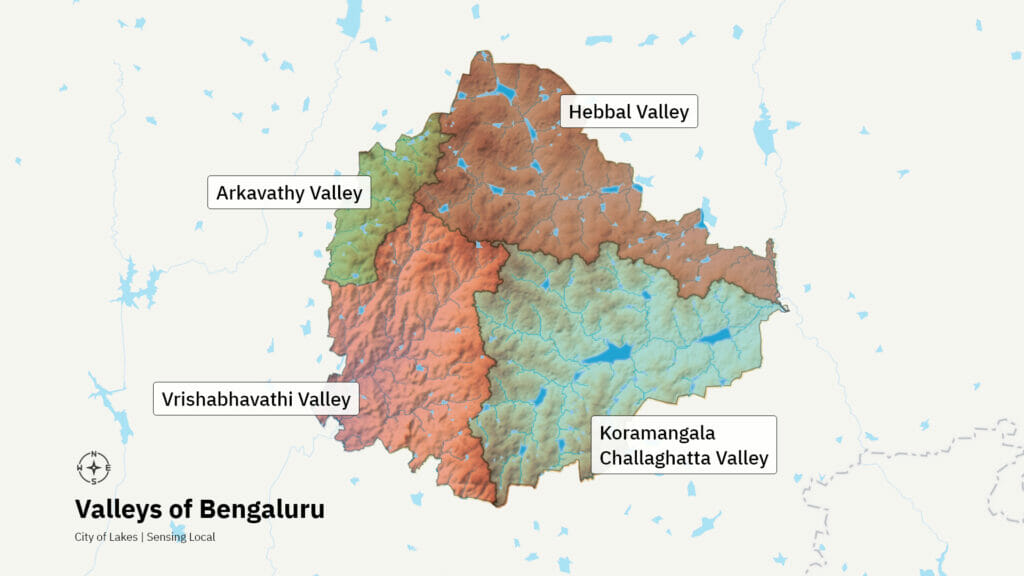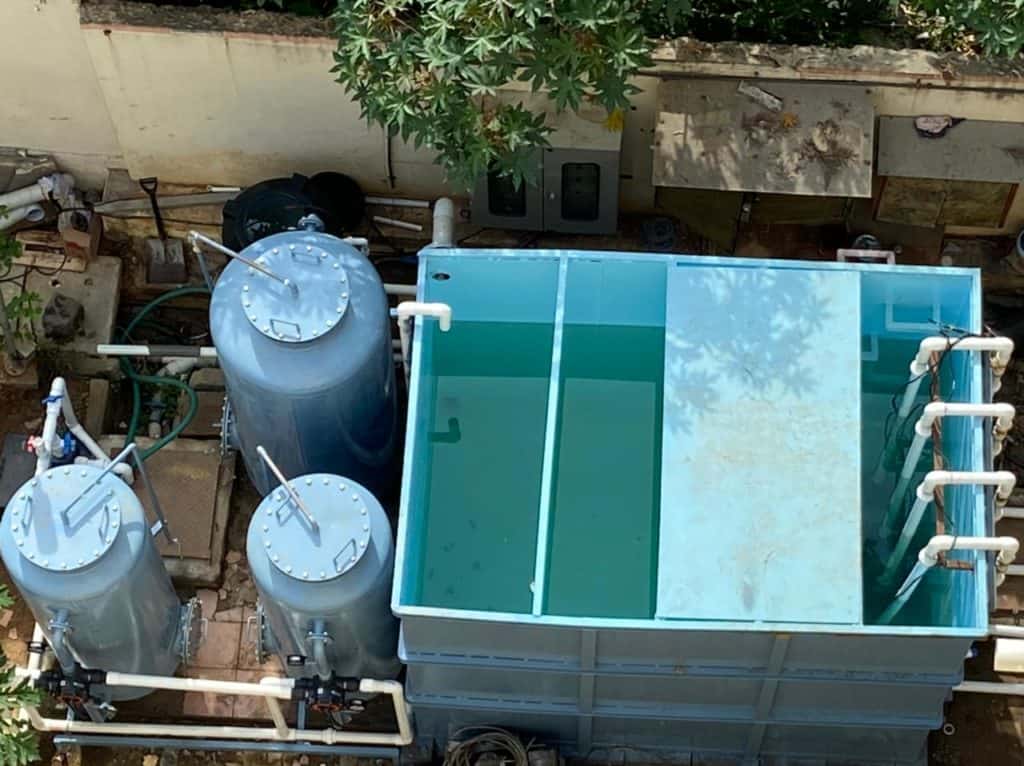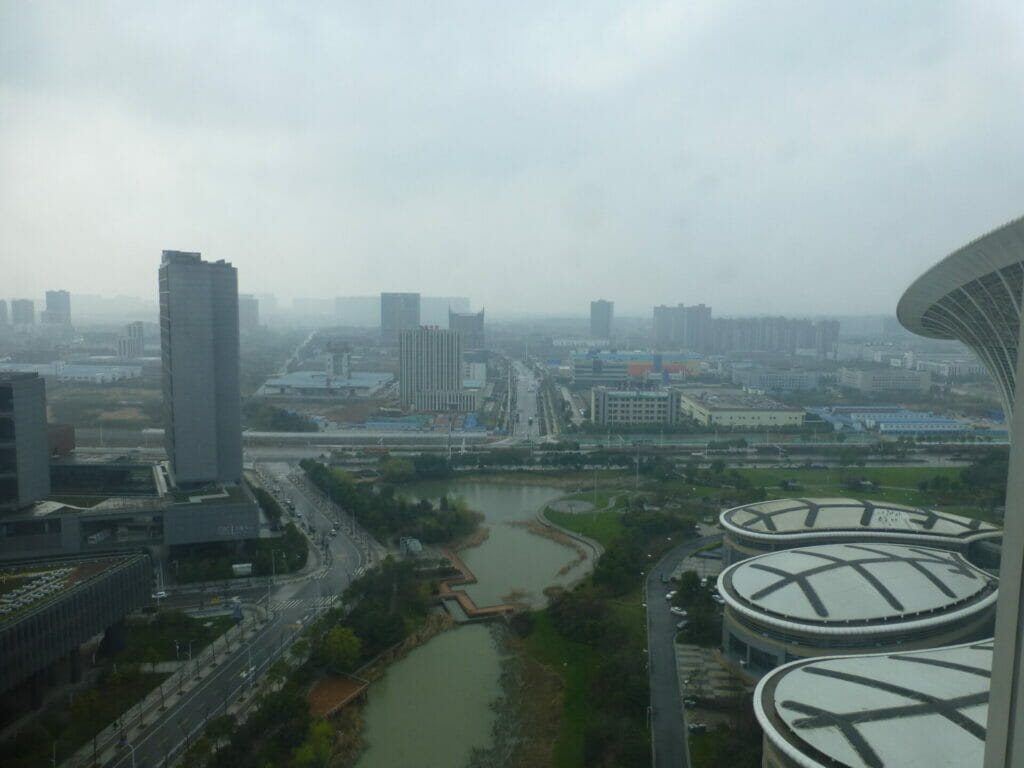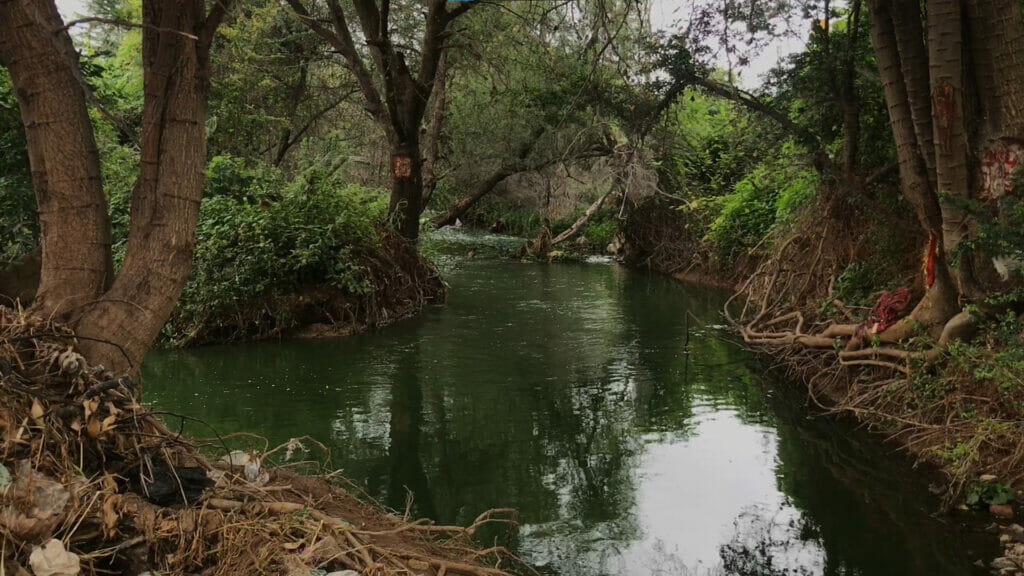As I write this, we have entered a wet and ‘thunderstormy’ October, but please forgive me dear reader if the weather is bright and sunny when you read this. As we found in our analysis of rainfall patterns in the city, rainfall is becoming unpredictable in Bengaluru.
As early as February 2023, government authorities were celebrating full groundwater aquifers in Bengaluru. However, a few months later, as we head towards a potential monsoon deficit, the city’s groundwater levels have dipped. We turn desperately towards the Cauvery Reservoir, which is also dangerously low and sought after by farmers in Karnataka and Tamil Nadu as well.
How can a mega city like ours handle the unpredictability of a climate change era monsoon, where we experience searing heat one month and flooded streets the next?
The solution is to be as self-sufficient as possible, say hydrologists and urban water researchers, Rashmi Kulranjan and Shashank Palur. Although this sounds like a pipe dream, the researchers tell me how the city could be both drought-proof and flood-proof.
About the researchers
Rashmi and Shashank work at the Urban Water Programme at WELL Labs, where they study water flow patterns in urban water systems, especially lakes in Bengaluru. Rashmi Kulranjan is also a PhD scholar at the Ashoka Trust for Ecology and Environment (ATREE) where she studies Bengaluru’s cascading lake system and how current practices of individual lake management impact these systems as a whole. Shashank’s previous work looked at how much of Bengaluru’s cascading lake system is still intact. Currently, both researchers focus on the city’s wastewater production and how it can be reused at WELL labs.
CM: Considering how unpredictable rainfall and weather patterns have become, what is the first thing that the city needs to focus on for water management?
Shashank: One of the things in focus right now is wastewater. We know, with the KC Valley and H and N valley projects, they [the government] are sending the water out to rural districts. They are basically transporting water over hundreds of kilometres upstream to pump it downstream to those districts. This is very energy intensive.
BWSSB currently says that they are reuisng 800 MLD [millions of litres per day] of treated sewage (including water sent out to rural districts), but we have estimated that the city generates around 1,900 MLD of treated wastewater. So, where is that 1,000 MLD of treated water going? Maybe some of it is flowing as streams into rivers like Vrishabhavati.

CM: So, there is a lot of unused treated wastewater in the city?
Shashank: Yes. Right now, the centralised sewage treatment capacity is around 1,200 MLD. Decentralised STP treatment [e.g., apartments] is around 600-400 MLD. Our Cauvery water supply to the city is around 1,400 MLD. If we reuse this treated water properly, we can reduce our dependence on Cauvery and ease the burden on that system.
CM: That sounds very simple. So where is the hold-up? Is it really that hard to circulate that water back into the city?
Shashank: Infrastructure is an issue. We don’t even have water supply connections throughout the city. Circulating wastewater is a huge task. There is also a perception problem. People do not like the idea of drinking treated wastewater. I think people mostly use treated wastewater for potable purposes in the face of scarcity, it is never out of choice. That has been the case in Chennai, Singapore, Israel.
We did a pilot last year where we looked at the potential for using treated wastewater from apartments to water BBMP parks. Many of these parks were facing water scarcity and many apartments had more treated water than they could use.
And apartments are willing to give this water for free, but nobody is willing to take it, even though they [apartments] use the same water for landscaping purposes. Although many apartments were willing to collect the treated wastewater and transport in tankers, parks couldn’t take this water because they lacked storage tanks.

We also need to have clear and practical norms for using treated water. When we were doing this pilot, using apartment-treated water for parks, KSPCB asked us to prove that the water was clean. This is the same water that apartments already use for flushing and landscaping. But they wanted tests. This is not feasible. No apartment or park can do a Rs 1,000 test of the treated water each time. We need more affordable solutions.
Our preliminary interviews suggest that 30%-50% of treated wastewater apartments are unused. It is either released into stormwater drains, where it goes to centralised STPs and gets treated again. During our surveys, we calculated that just 10 large apartments [500 units each] in Yelahanka zone, we found that approximately two MLD [millions of litres per day] of treated wastewater was unused.
This could easily be reused, and we don’t need huge pipelines. We just need localised streams. Only, apartments should be allowed to sell the water. Right now, they are not allowed to do that. They have to use all this water within their complex which is not possible. So, they probably end up releasing it into stormwater drains.
CM: Don’t apartments already have sensors in their STPs?
Shashank: Yes. But sensors mandated by KSPCB cost around Rs 8.5 lakh. Preliminary apartment interviews that we have done show that it costs them around Rs 10-12 lakh to run a 250 KLD (thousand litres per day) STP. Then you add Rs 8.5 lakh investment. If something goes wrong in the STP and the apartment is trying to fix it and the sensor detects an issue, KSPCB can fine the apartment for not treating the water.
And big apartments ask why they should be charged and penalised when they are trying to treat wastewater when individual houses and smaller buildings are only paying Rs 100 a month as sewerage charges. Only, fear of fines is motivating apartments to keep their STPs running at all.
Read more: BWSSB fails to monitor water quality in 13 sewage treatment plants
CM: Is the Chinese sponge city model feasible in Bengaluru?
Note: Sponge cities are urban models that first originated in China in the early 2000s as flood control measures. In this model, cities create or maintain existing natural spaces to absorb excess rainwater and channel it to recharge groundwater. Most man-made elements in cities, such as concrete buildings, roads, etc do not absorb rainwater. This, coupled with poor drainage and encroachment of wetlands, can cause floods.
Sponge cities are meant to absorb rainwater through green spaces, like forests and parks and wetlands, like lakes. In China, some of these sponge areas are no-go zones for construction. The idea is gaining popularity in cities across the world. Chennai and Mumbai are also looking into this concept for flood control.
Rashmi: From what we could understand, the Sponge City model became popular because of the way it was implemented. One person came up with the idea and because China is not a democracy, it was implemented very quickly across multiple cities. It appears to be effective, based on initial results that Chinese cities like Wuhan and Beijing have put out. But there are also problems.
One issue is these cities [in China] do not seem to have a long-term monitoring plan to see if it is really working. When we went through the detailed reports put up by some cities in China, we found that the sponge model was effective in controlling floods in normal rainfall years, but was not always effective during those once in 50 years, once in 100 years huge rainfall events. And these sort of rainfall events are going to become much more frequent with climate change.

This is especially important because they implemented one model across the country. This may not work in India, where different cities have different climates and hydrological regimes. You need localised solutions rather than one model being implemented across the country.
For a city like Bengaluru, we realised that instead of a city-wide sponge model, smaller projects would be more effective. Because the city is already developed. We can’t go ripping outbuildings and layouts to make sponge cities. Basic activities like cleaning up stormwater drains and maintaining them would also be sufficient.
Sponge cities are easier to implement in the outskirts of Bengaluru or other upcoming cities.
Shashank: None of these solutions are silver bullets. They have to work with existing realities. We also already have flood control mechanisms in Bengaluru. If existing lake systems are leveraged and used as they were meant to be, that is a cascading system where rainwater flows from lakes upstream to a network of lakes downstream, that itself would absorb a lot of the impacts of heavy rains.
CM: Do our cascading lake systems still exist? Do the connections still exist? Can they function as a flood control system?
Rashmi: Yes. But it is important to control lake inflows. Right now, our lakes are being used as dumping grounds to collect treated wastewater and, of course, raw sewage. Most of the lakes have water throughout the year. But our lakes will be most effective if they can collect rainwater and recharge ground water aquifers.
During heavy rainfall years, they can absorb the excess rainwater through stormwater drains and cascade downstream. I think as per our calculations half of the water in our lakes is from wastewater. We would have that much more space to collect rainwater.
Read more: Study on cascading lakes in Hebbal explains why so many of them have dried up
CM: So, the lakes could be our sponges?
Shashank: Yeah, we already have a Sponge City model. We just need to use it the way it is meant to be. And this can be flexible. We can hold back water and keep lakes somewhat empty in the monsoon to collect rainwater and as that water goes into the ground during the dry season we can release more water into the lakes. It is as simple as installing sensors in sluice gates.

CM: What are the administrative barriers to realising all this? This is something that your are looking into right?
Rashmi: Yes. The bureaucracy around water management is a big challenge.
Shashank: Definitely. If you take a lake, the lake and the stormwater drains that bring water to the lake are under the BBMP. The treated water, rainwater and sewage travelling through the stormwater is BWSSB’s purview. BBMP is in charge of building STPs at these lakes, BWSSB is in charge of monitoring the treatment, and KSPCB is in charge of setting the standards for treatment and water quality. KTCDA is in charge of approving lake development proposals.
Ideally, water management should be under a single department. It cannot be broken down this way because water in the city is part of a complex system. Right now, these departments are also siloed. For instance, during a recent Brand Bengaluru meeting, BWSSB officials came to discuss water in the city. The conversation veered to lakes but they said lakes was BBMP’s purview and BBMP was not present there. Why were they not there for a meeting on water management? So, agencies need to talk to each other.
Rashmi: Ideally, we need a single entity managing all water systems in the city.
CM: If you had the power and resources, what is one thing you would do to make Bengaluru water resilient?
Rashmi: I would clean up all the lakes and make sure they only get rainwater. Not even treated wastewater and definitely not sewage. Use lakes as the flood control mechanism that they are meant to be.
Shashank: I would want to reduce dependence on variable water sources. I am coming back to wastewater. We are seeing the impact of one year of low rainfall on Cauvery and the protests around it. I think our system is very inefficient. We keep pumping in fresh water from hundreds of kilometres and then letting wastewater flow out of the city [through rivers like Vrishabhavathi] or taking treated wastewater to other districts, which are further away.
Meanwhile, we are giving a huge subsidy for Cauvery water. Instead, we need to start selling treated wastewater, especially for uses like metro, building construction, etc. And technology has improved. We can have decentralised STPs. A layout can have its own STP and reuse the water back into the layout or sell it and use the money for layout development.